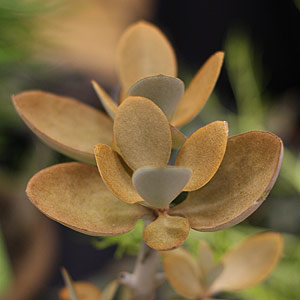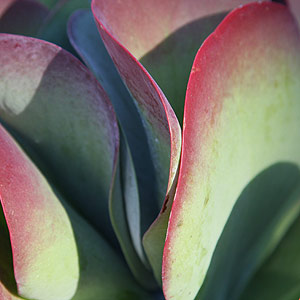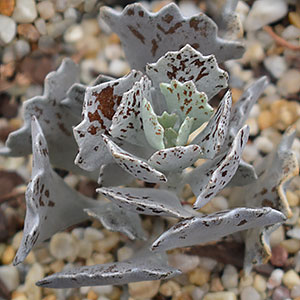
With over 100 species in the genus, Kalanchoe are a thick leafed succulent that are grown both for the flowers and the foliage.
Well known varieties such as Kalanchoe ‘Flapjacks’, pictured below is one of the most widely grown.
However with lots of hybrids and species that differ significantly such as Kalanchoe orgyalis, you will be spoilt for choice.
Kalanchoe Plants are widely used as houseplants and are readily available for sale in nurseries. With many new varieties, usually Kalanchoe blossfeldiana Hybrids, it it best to look at the species as well.

With brilliant flowers this easy to grow succulent plant needs a warm position near a window with lots of bright light through the cooler months.
Consider shifting Kalanchoe plants during the warmer months, a little afternoon shade will help prolong flower life and keep the foliage in good condition.
Remember that Kalanchoe are one of the summer dormant succulents so cut back on water during this period
Care

Care is not difficult if you remember a few basics.
With so many species, such as the fascinating Kalanchoe rhombopilosa pictured right, you will find that cultivation does differ a little between varoeties.
So check out notes for individual species before purchasing.
- Firstly Kalanchoe are a succulent, and do best in a well drained soil, so over watering can be a problem. Try watering once every week or two, but test for dryness, if the soil is dry water, if it’s not don’t water.
- Kalanchoe do not like cold conditions, they need to be over wintered indoors in most areas, and in fact are generally regarded as an indoor plant.
- Like many succulents they require only a little fertilizer when in active growth, a balanced slow release fertilizer is usually OK.
- Kalanchoe can be deadheaded after flowering to improve appearance.
- Not all plants are grown for the flowers that appear from fall through to spring, many such as Kalanchoe orgyalis (pictured) have fascinating foliage.
Summary
- Light – Full sun or very bright indoor light.
- Watering – Wait until the soil nearly dries out between watering. Less water in winter.
- Temperature – This is the critical part. Kalanchoe do not like it cold, so keep away from drafts and try to keep the temperature above 55 F
- Potting Mix – Use a specialist cactus and succulent potting mix, or a very open ordinary potting mix.
- Fertilizer- Usually a slow release fertilizer in spring and again in late summer is sufficient.
Varieties
Kalanchoe plants available for sale are usually Kalanchoe blossfeldiana Hybrids. However many species are also worth seeking out
- Kalanchoe blossfeldiana
- Kalanchoe thyrsiflora (Kalanchoe Flapjack),
- Kalanchoe orgyalis,
- Kalanchoe daigremontiana,
- Kalanchoe pinnata
- Kalanchoe tomentosa
Propagation
The species can be propagated from seed.
Some varieties will produce offsets, and these can be divided.
Most can be propagated from leaf cuttings, and some from ariel layering.
Kalanchoe are available for sale from the following specialist nurseries.
SEQUIM RARE PLANTS500 N. Sequim Ave. Sequim, WA 98382
Small mail order nursery with a very interesting range of perennials and other plants. Includes: Aeonium and many others
www.sequimrareplants.com

